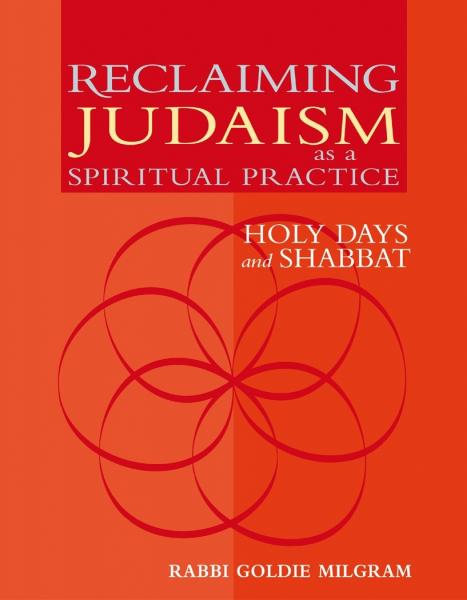How might a feminal idea differ from a seminal idea?
Pass both a lulav and an etrog to tonight's guests in your sukkah. Let the person to whom it comes, if they are so inclined, reflect on the differences in the qualities of these two symbols. Allow room for humor, scent, acting, conceptualizing, and singing.
One related memory that comes to mind for me is when the women rabbinical students at the seminary where I trained (Reconstructionist Rabbinical College) were sitting together in collective sadness in a sukkah. Our sadness came from the absence of Jewish women’s history, philosophy and life-cycle rituals in both Judaism and rabbinical school.
Then soon-to-be "Rabbi" Rebecca Lillian spoke up and said "what about the way women’s studies has become an accepted department in secular universities, couldn’t we create the same thing at a seminary?." The "aha" moment was felt by all.
A feminal idea had been expressed. (Yes, I invented the words feminal and infeminate. Otherwise who put the idea there?)
In our discussion we determined that we hoped for something even more significant. Rather than offering only separate classes on Jewish women’s studies, we would promote its inclusion in the every day classes at every level: History, philosophy, ritual, text, prayer.
Although the idea sprang into being (yesod - would be the sephirotic depictor), we didn’t rush back to the men then heading the seminary and fight for what we now knew was needed. We strategized a plan to wrap the institution in awareness and collaborative energy. We en-wombed the seed of possibility, nurtured and grew it over the year. We infeminated the situation.
We met with the male rabbinical students, who were incredibly supportive and pro-active with us. Then all of us selected which faculty members to befriend and gently lobby on the topic. While a few in the administration told us bluntly they "saw no reason for such a program," most were both encouraging and involved in bringing the notion to fruition. Today, over a decade later, Jewish women’s studies is on the map and in the mainstream.
Questions to consider:
How is the Judaism in your family, life and community expressed in seminal and feminal ways?
When is one style indicated or the other?
Is this notion helpful?
Seminal Idea: Men’s Night in the Sukkah
In Temple times, the Talmud indicates that it was the case that on the full moon Jewish men would create burning tapers from the linen underwear of the priests from the Temple. They would ascend the hills around Jerusalem bearing a folded palm leaf, and shaking their lulav aloft, bless the full moon.
Many of the men I know also take a night for themselves in the sukkah. Their lives are not just frail, men have been treated as dispensable units of war by society. ..as economic beasts of burden, as unfeeling brutes. Unfair, unfathomable stereotypes.
Men, too, you might take the symbols of this holy week in hand and call in your ancestors to the sukkah. Tell stories of the men who shaped you, who are role models for you, who you want to call ancestor and also those whose tree you would like to give a good shaking.
Is there a minyan (group of 10) of men in your life? Has business and commitment robbed you of a true brotherhood? Bless the men who come, risk including someone new, tell them what you love about them, bless them with what they hope to receive in life. Include your sons if you have them. I’d love to hear how it goes.

Learn more about Jewish holy days
in Reclaiming Judaism as a Spiritual Practice;
Holy Days and Shabbat by
Rabbi Goldie Milgram